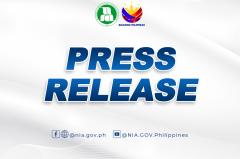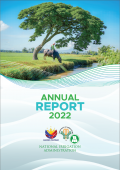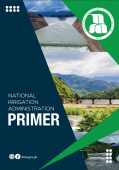BOARD OF DIRECTORS
The Board of Directors exercises the powers and functions of NIA.
COMPOSITION OF THE BOARD
- Secretary of the Department of Agriculture as Chairman
- Administrator of NIA as Vice Chairman
- Director General of the National Economic and Development Authority as Member
- Secretary of Public Works and Highways as Member
- President of the National Power Corporation as Member
- One (1) member from the private sector appointed by the President of the Philippines on the recommendation of any national rice and corn organization of good standing and who shall serve for a term of four years unless sooner removed.
The Secretary of the Office of the Cabinet Secretary was designated Acting Chairperson of the NIA Board of Directors by virtue of Memorandum from the Executive Secretary - Office of the President. Before this, the Secretary of the Office of the Presidential Assistant for Food Security and Agricultural Modernization served as Board Chairman.
POWERS AND DUTIES PURSUANT TO PD 552:
- To formulate and adopt policies for the management and operations of NIA, and to prescribe, amend and repeal, with the approval of the President of the Philippines, rules and regulations governing the manner in which the general business of NIA may be conducted, including provisions for the formation of such committee/s as the Board may deem necessary to facilitate the business;
- To recommend to the President of the Philippines the appointment of such number of Assistant Administrators as the exigencies of the service may require from a list of names submitted by the Administrator; to fix the compensation of the Administrator and his Assistant/s, and by at least two-thirds vote of all the members, to recommend the suspension and/or removal of the said officials for cause;
- To approve, subject to the final action of the President, the annual and/or supplemental budget of NIA which may be submitted to the Board by the Administrator from time to time;
- To appoint and fix the compensation of a Board Secretary who shall hold office at the pleasure of the majority of the members of the Board.
THE RATIONALIZATION PROGRAM IN NIA
The Rationalization Plan (RPlan) for NIA was authorized under Executive Orders 366 (2004) and 718 (2008). NIA's RPlan aims to improve the delivery of service and productivity thru the merger of offices and streamlining their functions; and the creation of irrigation management offices out of the irrigation systems offices and provincial irrigation offices. The Internal Audit Service and Irrigation Engineering Center are new offices in the central office created under the RPlan. Certain functions and responsibilities that used to be lodged at the central office are decentralized to the field offices. The Irrigation Management Transfer Program is a major component of the RPlan. NIA started implementing its five-year phased Rationalization Plan in 2008.
link: Organizational Chart
CENTRAL OFFICE
The Administrator is NIA's chief executive officer. He is supported by a Senior Deputy Administrator and two Deputy Administrators: for engineering and operations; and administrative and finance. The central office issues guidelines and policies and exercises control over field operations.
FIELD OFFICES
Decentralization of functions is carried out through the delegation of various authorities to field offices.
- Regional Irrigation Offices (RIOs)
There are 15 RIOs, each headed by a Regional Irrigation Manager (RIM). These offices are responsible for implementing the plans, programs, and policies of the Agency within their respective regions.
The RIOs also provide oversight and supervision to the Irrigation Management Offices (IMOs) under their jurisdiction.
- Integrated Irrigation Systems
There are two Integrated Irrigation Systems, each managed by an Operations Manager :
- Upper Pampanga River Integrated Irrigation Systems (UPRIIS)
- Magat River Integrated Irrigation Systems (MRIIS)
These managers are responsible for overseeing operations related to the two major reservoir systems.
- Irrigation Management Offices (IMOs)
There are 61 IMOs, each headed by a Division Manager. IMOs are responsible for the construction, rehabilitation, operation, and maintenance (O&M) of irrigation projects and systems within one province or a group of provinces.
They work in collaboration with farmer-beneficiaries in implementing O&M plans.
Provinces with national irrigation systems covering less than 3,000 hectares are clustered into an IMO. Instead, they remain under the direct supervision of the RIO. These include:
- Region V: Albay, Catanduanes, Masbate, and Sorsogon
- Region IX: Zamboanga del Norte and Zamboanga Sibugay
A satellite office was established to support operations.
- Project Management Offices (PMOs)
PMOs are headed by Project Managers and are responsible for the implementation of foreign-assisted and locally funded projects. They directly handle the execution, coordination, and monitoring of project activities.
The Project Manager reports directly to the Administrator through the Deputy Administrator for Engineering and Operations and the concerned RIM.
Locally funded projects, on the other hand, are implemented by the RIOs through the IMOs or a team headed by a Project Engineer.

















